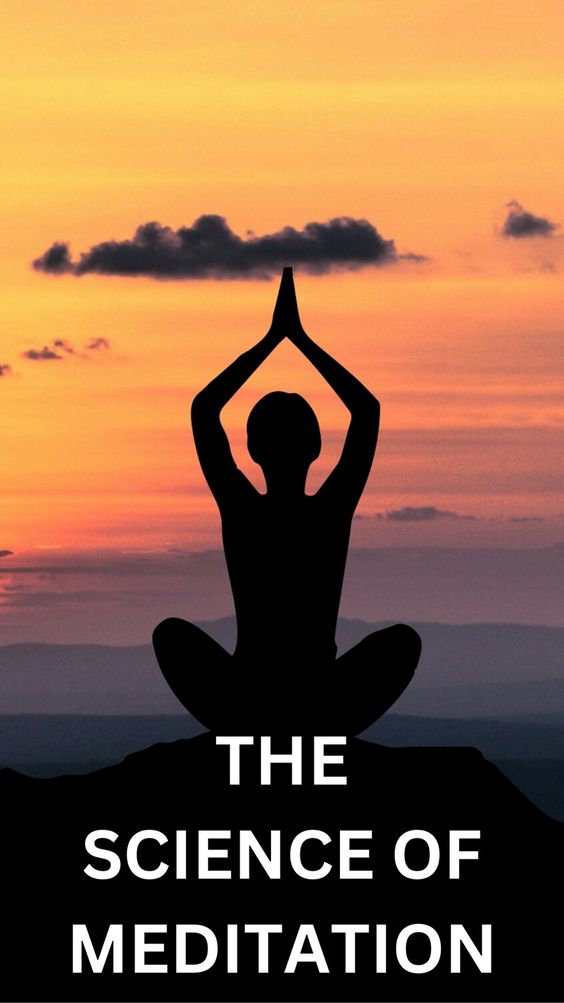
Transcendental Meditation was discovered by Maharishi Mahesh Yogi. This is a very simple and natural meditation method. We do not have to make any effort in this meditation, it starts happening automatically.
This meditation method is also very similar to silent Mantra meditation because we use some special ienga mantras in it. So, here let’s know more about Transcendental Meditation mantras, examples of Transcendental Meditation mantras, and benefits.
In recent years, when we hear the word “meditation”, we involuntarily tense up, because either we have already unsuccessfully practiced it, or we quite reasonably believe that great patience may be required for its practice – and this causes discouragement.
However, there is one kind of “effortless meditation”, as its adherents claim. Reviews about technology are very different. We will give an objective description of the methodology, and it is up to you to decide whether to apply it.
Contents
What Does It Mean By Transcendental Meditation Practice?

Transcendental Meditation is a topic of much discussion in India and abroad today. This transcendental meditation is a form of mantra yoga or chanting yoga or kundalini yoga. The seer mentally chanted the words of a guru, sitting calmly.
It is a kind of Hindu Meditation, which keeps closing the thoughts inward. There is no emphasis on the brain in this process. Thoughts continue to be extroverted, but the frequency of the mantra continues, the lips and the tongue are usually closed.
In this way, in this instrument, except the frequency at the mental level in the form of just words (mantras). No other type of control or pressure on the mind is required.
The practice of transcendental meditation (TM) helps people stop thinking about things that are distracting and cultivate a relaxed awareness. The late Maharishi Mahesh Yogi originated TM from India’s illustrious Vedic culture. In the 1960s, he introduced the method to the United States.
The TM practitioner sits comfortably, closes their eyes, and repeats a mantra aloud while meditating. The Vedic religion uses mantras, which are words or sounds, to help you concentrate.
Supporters of TM claim that during meditation, normal thought is “transcended.” It is taken over by an awareness of only consciousness. The meditator reaches absolute quiet, stability, rest, order, and the absence of all mental barriers in this condition.
Regular meditation has been shown in certain studies to lessen chronic pain, high blood pressure, anxiety, cholesterol, and also the need for medical services.
Both TM along with other kinds of meditation are generally secure and may enhance a person’s happiness in life. However, doctors concur that meditation should not be utilized in place of traditional medical care or as a stand-alone treatment for any specific health problem.
According to a large number of studies, TM has the following positive effects on the body:
relieves depression;
lowers blood pressure;
normalizes mental processes;
increases the possibility of cognitive functions ;
reduces elevated levels of cholesterol and lipid oxidation;
helps to get rid of the consumption of tobacco and alcohol;
reduces stress and anxiety.
Also Read: Meaning & Significance of Om Mani Padme Hum
How Does TM Differ From Other Meditation Practices Out There?

The David Lynch Foundation has done research that it claims shows three main approaches to meditation that most people “use”:
1. Focused attention (focusing attention on a thought or object).
2. Open monitoring (observation of breathing, thoughts, environment).
3. Automatic self-transcendence (spontaneous experience of calmer levels of thought – a unique state of calm alertness).
The technique of transcendental meditation does not require focused attention or open control. It is a process of automatic self-expression allowing the practitioner to experience a field of calm deep within.
This is a simple, natural, easy technique (just sit comfortably and close your eyes), practiced for 20 minutes twice a day. It should also be said that this is not a religion, philosophy, or way of life.
According to the official website of TM, there are additional differences between the practice and the “usual” ones:
1. Transcendental Meditation: Alpha brain wave, effortless effect (“relaxed, happy, focused”).
2. Mindfulness: brain wave activity – theta, the effect is achieved with moderate effort (“fabulous”).
3. Concentration: brain wave activity – beta, the effect is achieved with great effort (“logical, problem-solving”.
Adepts of TM insist that a teacher is needed for a person who wants to master this form of meditation, but they also agree that benefits can be obtained even if one practices it independently.
Also Read: Meaning & Benefits of Aham Brahmasmi Mantra
Specifications Of Transcendental Mediation:

Unlike some meditation techniques, learning the TM technique involves a seven-step training program from a licensed teacher.
During the 1 hour introductory lecture, a TM instructor gives general information regarding the method and its results. A second lecture lasting 45 minutes that provides greater detail follows that.
The next step is for interested parties to go to a 10-15-minute interview as well as a 1- to 2-hour personal training session. They each receive a mantra after a brief ceremony, which they are instructed to keep private.
After that, there are three days of verifying for accuracy and one or two more hours of teaching. The instructor performs the following during these sessions:
- details the procedure in further detail
- corrects when necessary
- provides details on the advantages of consistent practice.
The teacher meets with students on a regular basis throughout the following few months to guarantee proper technique.
People spend 15-20 minutes each time they practice TM. That typically implies twice a day, once before breakfast as well as once before dinner.
There is no demanding work involved in TM. Additionally, neither contemplation nor focus is necessary. Instead, teachers advise students to breathe properly and concentrate on the chant.
According to a few accounts, people who have specific psychiatric problems and meditate may have new or worsening symptoms. Before beginning TM, speak with your doctor if you have a current mental health condition. Tell your meditation teacher about your situation as well.
Here are a few specifications for regular successful meditation practice:
- Transcendental meditation does not require any effort in this meditation method.
- Transcendental meditation does not require any concentration in this meditation
- In Transcendental meditation, you do not even have to control the mind.
- One does not have to focus on anything.
- This meditation is scientifically certified for depression and peace of mind.
Also Read: What Is Shiring Mantra And Its Benefits?
Methods To Do Transcendental Mediation:

The TM algorithm consists of eight steps:
Step 1 To Practice The TM Techniques:
- Sit in a comfortable chair. The legs must not cross.
- Or sit on the ground – it is not necessary to take the lotus position. Put your hands on your knees.
Step 2 To Practice The TM Techniques:
- Take a few deep breaths and close your eyes.
- Continue breathing slowly and allow your body to become more and more relaxed.
- Your eyes should be closed for twenty minutes of practice.
Step 3 To Practice The TM Techniques:
- Slowly repeat the mantra in your mind without verbalizing it (roll your tongue if you find it is trying to repeat the words).
- The mantra must be in Sanskrit.
Step 4 To Practice The TM Techniques:
- While repeating the mantra, you should not focus on the words and their intended meaning but try to feel the mantra.
- When extraneous thoughts arise, calmly return to them again and again.
Step 5 To Practice The TM Techniques:
Continue chanting the mantra for about 20 minutes. As you do this, allow yourself to feel your closeness and oneness with the universe.
During meditation, you will find that your mind will undergo 4 mental states (not necessarily in the same sequence):
- exclusively mantra;
- only thoughts;
- thoughts and mantras exist together;
- no mantra, no thoughts.
It is highly unlikely that beginners will experience the fourth state (no mantra, no thoughts). But if it happened, rejoice. And if it doesn’t work out, no big deal.
The fourth mental state cannot be achieved by conscious effort, but only by regular practice. The important thing is that you should not stick to the mantra while meditating. If you do this, this will be the only mental state you will experience during your meditation session. You need to mentally repeat the mantra without focusing on it.
Actually, the fourth state is your goal. Despite this, do not worry if it does not come for a long time. Rejoice in the other three – already at this stage, you are likely to feel calm.
Step 6 To Practice The TM Techniques:
After 20 minutes, begin to move your toes to return to normal.
Step 7 To Practice The TM Techniques:
open your eyes.
Step 8 To Practice The TM Techniques:
Sit for a few more minutes until you feel ready to start the day.
Remember that there is no right or wrong mental state – they are all part of transcendental meditation. It is only necessary to try to move between the first three states in order to experience the fourth.
We wish you good luck!
Also Read: Vedic Meditation VS Transcendental Meditation
Benefits Of Practicing Transcendental Meditation Techniques Daily:

There are many benefits people get if they practice Transcendental Meditation daily. It makes our minds very calm and our bodies very light. The popularity of the transcendental meditation method is increasing day by day. This meditation method can also be attested by scientists. Even abroad, big institutes have been opened to teach this meditation method. Where the teachers who are proficient in this method teach this meditation method. So, see the benefits here…
- Practicing transcendental meditation practices can avoid depression.
- The transcendental meditation technique balances our blood pressure and provides total protection to the heart.
- Transcendental Meditation mantra sounds bring inner peace.
- Also, TM practice is a mindfulness meditation that brings pure consciousness.
- These meditation techniques continuously generate energy in our bodies, which keeps us full of energy throughout the day.
- It takes the brain’s working power and creative power to an extreme level.
- Relieves insomnia disease.
- By doing a meditative meditation session, our body, mind, and brain become fully healthy.
Also Read: 10 Minute Meditation to Transform The Life!
Transcendental Meditation Mantras You Can Use For TM Practice:

The practice of transcendental meditation or TM mantras pronunciation is the best medium for stress management. Students can use their subconscious brain more and more in their study and creative work through regular practice. This mantra is to achieve health and success. So, let’s see the Transcendental Meditation Mantra list for TM meditation practice…
Mantras For Transcendental Meditation Used by Certified TM Teacher Trained in 1961:
1. Mantra for male students –Ram
2. Mantra for female students – Shriram
TM Mantras Used by TM Teachers Trained in 1969:
3. Mantra for male students aged 0 to 15 – Ing
4. Mantra for male students aged 15 to 30 – Aing
5. Mantra for male students aged 30 to 45 – Shiring
6. Mantra for male students aged 46+ – Shiam
7. Mantra for female students aged 0 to 15 – Im
8. Mantra for female students aged 15 to 30 – Aim
9. Mantra for female students aged 30 to 45 – Shirim
10. Mantra for female students aged 46+ – Shiama
Transcendental Mantras Used by TM Teachers Trained in 1972:
11. Mantra for students aged 10 to 11 – Ing
12. Mantra for students aged 12 to 13 – Im
13. Mantra for students aged 14 to 15 – Inga
14. Mantra for students aged 16 to 17 – Ima
15. Mantra for students aged 18 to 19 – Aying
16. Mantra for students aged 20 to 21 – Ayim
17. Mantra for students aged 22 to 23 – Ayinga
18. Mantra for students aged 24 to 25 – Ayima
19. Mantra for students aged 25+ – Shiring
Transcendental Meditation Mantras Used by TM Teachers Trained in 1976:
20. Mantra for students aged 3 to 10 – Eng
21. Mantra for students aged 10 to 12 – Em
22. Mantra for students aged 12 to 14 – Enga
23. Mantra for students aged 14 to 16 – Ema
24. Mantra for students aged 16 to 18 – Aeng
25. Mantra for students aged 18 to 20 – Aem
26. Mantra for students aged 20 to 22 – Aenga
27. Mantra for students aged 22 to 24 – Aema
28. Mantra for students aged 24 to 30 – Shiring
29. Mantra for students aged 30 to 35 – Shirim
30. Mantra for students aged 35 to 40 – Hiring
31. Mantra for students aged 40 to 45 – Hirim
32. Mantra for students aged 45 to 50 – Kiring
33. Mantra for students aged 50 to 55 – Kirim
34. Mantra for students aged 55 to 60 – Shiam
35. Mantra for students aged 60+ – Shiama
Transcendental Meditation Mantras Used by TM Teachers Trained in 1987 to Present Day:
36. Mantra for students aged 0 to 11 – Eng
37. Mantra for students aged 12 to 13 – Em
38. Mantra for students aged 14 to 15 – Enga
39. Mantra for students aged 16 to 17 – Ema
40. Mantra for students aged 18 to 19 – Aing
41. Mantra for students aged 20 to 21 – Aim
42. Mantra for students aged 22 to 23 – Ainga
43. Mantra for students aged 24 to 25 – Aima
44. Mantra for students aged 26 to 29 – Shiring
45. Mantra for students aged 30 to 34 – Shirim
46. Mantra for students aged 35 to 39 – Hiring
47. Mantra for students aged 40 to 44 – Hirim
48. Mantra for students aged 45 to 49 – Kiring
49. Mantra for students aged 50 to 54 – Kirim
50. Mantra for students aged 55 to 59 – Sham
51. Mantra for students aged 60+ – Shama
Scientific Interest Proving The Impacts Of Transcendental Meditation Practice With Correct Mantra

In a new Italian study, scientists have found that during such meditation, a number of changes occur in the brain, which cause a feeling of relaxation after practice.
The fact is that transcendental meditation is different from its other forms. It does not teach us to focus on the present and pay attention to current thoughts and feelings. On the contrary, the practice does not require much concentration and attention, as usual. All that is needed is to listen to the inner world and go beyond your thoughts and feelings.
One of the experiments involved 19 people. They meditated for three consecutive months twice a day for 20 minutes. Participants first filled out questionnaires to record their levels of anxiety and stress, as well as how well they coped with them.
They also underwent functional magnetic resonance imaging to monitor changes in brain activity.
In simpler terms, this type of meditation makes a real difference in how the brain works by regulating the current state of our mind. And most importantly – all this happens in just a few months of regular practice.
Try transcendental meditation for yourself to feel the changes inside, as Cameron Diaz, Liv Tyler, and Jennifer Lopez did in their time.
FINAL WORDS
One form of meditation is the Transcendental Meditation course. To enter a profound state of consciousness, you subconsciously repeat a phrase or word in your head.
Numerous health advantages of Transcendental Meditation have been identified, including lowering BP and reducing stress. You should discuss your alternatives with your healthcare professional if you’re interested in learning more about the TM technique.
When practicing mindfulness meditation, your main goal is to stop thinking. You gently draw your focus back to this very moment when you become aware that your thoughts have strayed.
When practicing Transcendental Meditation, you can assist focus your mind inside by repeating a certain mantra. The method is intended to calm your mind and enable it to focus on things other than the immediate environment.
About how important it is to meditate, we have told you more than once. Meanwhile, there is more and more evidence of the benefits of the practice, not only from conscious yogis but also from serious scientists.
Meditation, according to a recent study, doesn’t have to last for hours at all. Surrounding yourself with crystals on the seashore is also not necessary at all. For clarity of mind, calmness, and well-being, just 20 minutes of transcendental practice in the morning and evening at home is enough.
FAQ:

Q. What is the Transcendental Meditation technique?
A. One kind of meditation is the Transcendental Meditation method. You quietly recite a mantra in your head while using the Transcendental Meditation (TM) technique.
The Transcendental Meditation method focuses on calming your body into a condition of peaceful alertness. You are fully alert despite your totally relaxed body and calm mind.
Your busy mind becomes still during this sort of meditation, allowing you to transcend into a state that is pure consciousness. To transcend is to exceed.
Q. How does the Transcendental Meditation practice work to improve the practitioner’s life?
A. The Transcendental Meditation method is easy and straightforward. You spend 20 minutes practicing twice daily in a relaxed position while keeping your eyes closed.
You can meditate without an app using the Transcendental Meditation method. Instead, you chant aloud in your head a mantra.
A mantra is a phrase or word that takes on special significance in your mind. Your mantra is the direction you direct your consciousness.
The mantras used in Transcendental Meditation are not equivalent to English terms for things, emotions, or experiences. They are sounds that assist you in shifting your focus from active thought to a more in-depth state of self-awareness.
Q. What is the difference between traditional meditation practice and the Transcendental Meditation practice?
A. Most forms of meditation try to train or control the mind through thought patterns. Contrarily, transcendence doesn’t require any training, control, or concentration.
More Recommended Articles:-
- What Is Tummo Meditation & How Does It Work?
- What Is Merkaba Meditation & How Does It Work?
- UCLA Guided Meditation | Mindful Awareness
- What Is Vedic Meditation & How Does It Work?
- What Does It Mean By 6-Phase Meditation? Know Here!
- What Does It Mean By Gratitude Meditation?
- Which Meditations Are Called Spiritual Meditations?
- What Does It Mean By Deep Meditation?
- What Does It Mean By Third Eye Meditation?
- What Is Miracle Meditation & How Does It Work?
- What Does It Mean By Abraham Hicks Meditation?
- What Is Jedi Meditation & How Does It Work?
- What Is Chakra Meditation & How Does It Work?
- What Is Visualization Meditation? Steps To Do & Benefits
- Emily Fletcher Meditation | Ziva Meditation
- Heartfulness Meditation: A Complete Guide
- Abraham Hicks Law of Attraction: The Basics of the Book




